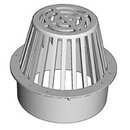H'Islander
Guest
Hey folks - relatively new to diving - I'm in Connecticut and have concentrated my diving mostly on old freighter wrecks in CT/NY/RI waters.
We dive wrecks for a few reasons, spearfishing, lobsters, and trinkets (bottles, brass, the usual suspects) that have spilled from wrecked cargo vessels - Was wondering if anyone has tried to design a dredge using compressed air bled into say, a 3" pvc pipe, to clear silt and debris from around wreck pockets?
I'm not talking reef destruction, I'm thinking 2-3 foot square areas known for sometimes giving up a bottle, a textile spindle, a brass coat hook, etc...
Am I on track or totally clueless?
We dive wrecks for a few reasons, spearfishing, lobsters, and trinkets (bottles, brass, the usual suspects) that have spilled from wrecked cargo vessels - Was wondering if anyone has tried to design a dredge using compressed air bled into say, a 3" pvc pipe, to clear silt and debris from around wreck pockets?
I'm not talking reef destruction, I'm thinking 2-3 foot square areas known for sometimes giving up a bottle, a textile spindle, a brass coat hook, etc...
Am I on track or totally clueless?





